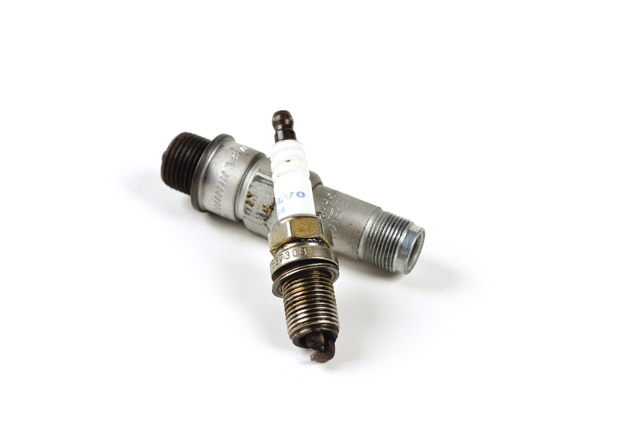Automotive spark plugs can be an Experimental option

By Dave Hirschman
I recently had the pleasure of changing the spark plugs in the Lycoming O-320 that powers my Experimental Van’s Aircraft RV–4, and, for a change, it really was a pleasure.
In fact, since it had only been about 150 flight hours since I had installed an E-Mag dual electronic ignition system (with auto plugs and harnesses), I really didn’t need to change them at all. The bottom plugs showed a hint of lead fouling, however, so I decided to replace (instead of clean) them.
At a mere $2 per plug, why not?
The top plugs looked just fine, but while the cowling was off, I replaced them, too. The whole set of eight auto spark plugs cost half as much as a single new aviation spark plug, and the kicker is that the auto plugs perform better. In fact, E-Mag strongly recommends auto plugs for its customers, and Experimental engine manufacturers are making cylinders drilled for metric auto plugs, so adaptors aren’t necessary.
Lightspeed Engineering, maker of Plasma electronic ignition systems, recommends auto spark plugs. ElectroAir requires FAA-approved spark plugs for Standard category engines, but gives owners the option in Experimentals.
Pilots often ask how long automotive plugs last in aircraft engines, and the unsatisfying answer is that no one seems to know. Mike Stewart, leader of Team Aerodynamix—a formation aerobatic team that flies RVs—operated a set of auto plugs more than 600 flight hours, and they were doing just fine when he replaced them with an identical set.
The availability and low cost of auto plugs makes them practically disposable.
Kevin Eldridge, an air racer and head of business development for Titan Aircraft Engines, said the vast majority of the engines the San Antonio, Texas, firm manufactures are delivered with auto plugs.
“I’ve flown and raced with auto plugs for years, and the real attraction at first was the lower cost,” Eldridge said. “But the reason the vast majority of our customers are using them now is that they work better, are more reliable, and are more resistant to lead fouling.”
Not all spark plugs are equal, of course, and gaps and temperature specifications must be appropriate for each engine installation. High-performance auto plugs (usually about $6 each) can cover an exceptionally broad range.
A fellow pilot with an identical ignition system and a similar Lycoming engine recommended NGK plugs, and Klaus Savier, founder of Lightspeed Engineering, endorses that manufacturer (as long as the part number begins with the letter B).
The reason auto plugs are preferable is that, when combined with an electronic ignition system with variable timing, they provide a bigger, hotter, longer-duration spark that burns the fuel/air mixture in each cylinder more thoroughly and efficiently. That means easier starting, more power at altitude, and better fuel economy. In contrast, magnetos with fixed timing produce less energy, and require more costly FAA-certified aviation spark plugs that have smaller gaps and a shorter-duration spark.
I felt a bit ungrateful tossing out a set of perfectly performing spark plugs. After all, each of them had provided about 100,000 faithful sparks per flight hour while being subjected to a hellish mix of flame, heat, pressure, cold, and vibration. During that time, they had received virtually no maintenance, attention, or appreciation at all. That’s a pretty thankless existence.
If an aircraft owner wants to clean and gap automotive spark plugs, that’s certainly doable. Lightspeed Engineering recommends 0.032 to 0.040 inches for low compression engines timed to fire at 25 degrees before top dead center, and 0.026 to 0.035 inches for engines with higher compression.
But I’ll simply replace the spark plugs at every second or third oil change. I bought a dozen the last time I was at the auto parts store—so I’m ready.
Email [email protected]
AOPA Frugal Flier coverage sponsored by Aircraft Spruce


